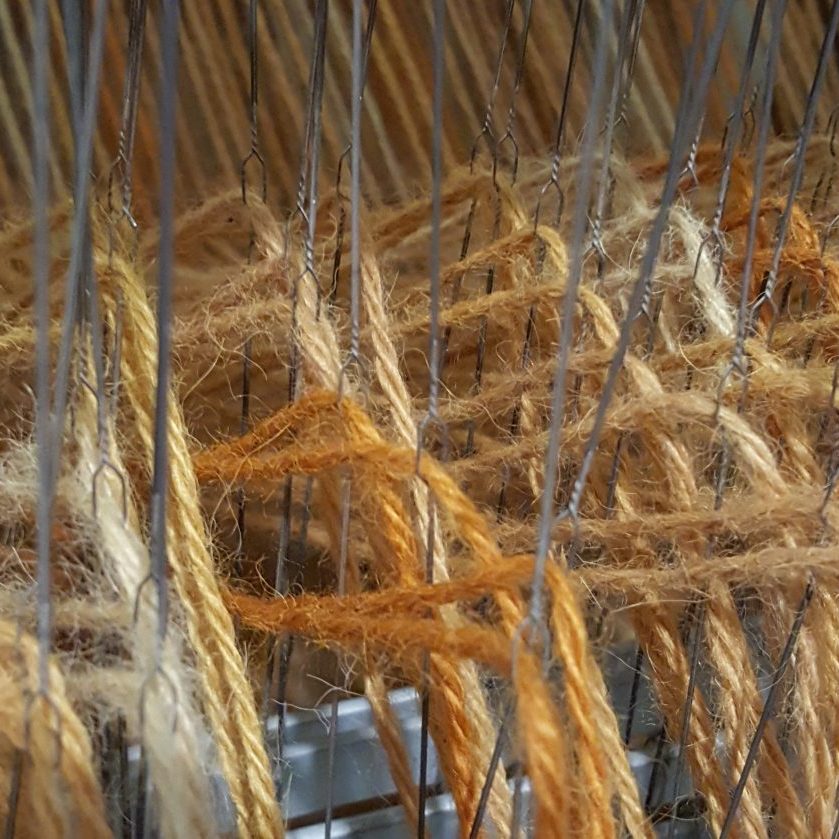The only specimen of E. amplifolia (ssp. amplifolia) I could find was a rather tall tree with branches high up and all fresh leaves out of reach. There were however plenty of dead leaves on the ground that hadn’t started to rot, so I scooped these up and went home with a bag full.
I simmered the leaves for a while, with a  small skein (a tie, really) of commercial yarn thrown in (see centre of ball) – this came out a deep brown which was what I had been aiming for after consulting a couple of sources. The next day I added a full skein of handspun, plus two other ties of the commercial, simmered them for well over an hour and waited for the same brown.
small skein (a tie, really) of commercial yarn thrown in (see centre of ball) – this came out a deep brown which was what I had been aiming for after consulting a couple of sources. The next day I added a full skein of handspun, plus two other ties of the commercial, simmered them for well over an hour and waited for the same brown.
As you can see, the handspun came out an uninspiring shade of mustard (I’ve since overdyed it with E. sideroxylon). The two ties, which have gone walkabout, came out two different shades of brick red. Conclusion? That the handspun, although carefully scoured, hadn’t been processed nearly a s much as the commercial and therefore wasn’t as receptive (porous?). It was also thinner, and translucent.
s much as the commercial and therefore wasn’t as receptive (porous?). It was also thinner, and translucent.
More recently I repeated the experiment with a second collection of un-rotted leaves of the same tree. The handspun came out of the dyepot in two different shades of honey brown, while the commercial was darker honey, but nowhere near as dark as the first experiment. Maybe the leaves were more rotten than I thought?
I also experimented (some time between the two other lots) with no-/mordant and/or modifier to see if there was much difference. Barely noticeable, so not one to repeat when contrast is called for.
Barely noticeable, so not one to repeat when contrast is called for.
There were a couple of small branches on the ground with fresh leaves that the parrots had been at, but not really enough to dye a skein with. Might try some leaf prints with these.

HI there! A quick question please – I’ve been asked about Peat dyed yarn that would be suitable for use in a woven commercial carpet – do you know anything about this? Or who produces it? So far I’ve drawn a blank! Any guidance would be appreciated.
LikeLike
Hi, the only info I’ve found on peat in dyeing is about it and its ashes used as a mordant, and perhaps a modifier, due to the iron content. Also the peat would be high in tannin (a mordant and a stain). Seems there was, but no longer is, a peat yarn, Eriotex, manufactured by Kultaturve in Finland.
LikeLiked by 2 people
I just knew you’d come up with something!!
I’ll pass this on to Botany Weaving Mill (based near my shop) who had the query!
Thanks! Rosemary
LikeLike
I had this experience with E Crenulata the first time. I think one factor is allowing the dye to cool between test and ultimate dyeing. I have since read India Flint pointing out that this will change the colour.
LikeLike
Aha! That sounds similar to the leaves ageing naturally. Thanks for the tip.
LikeLike